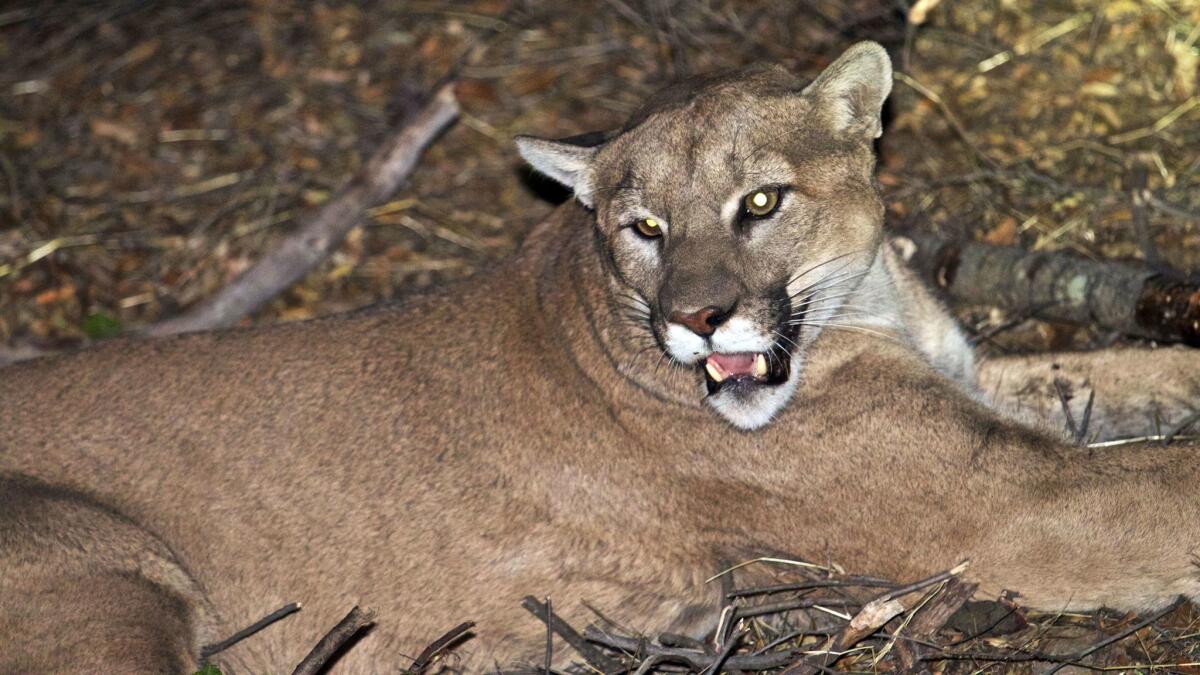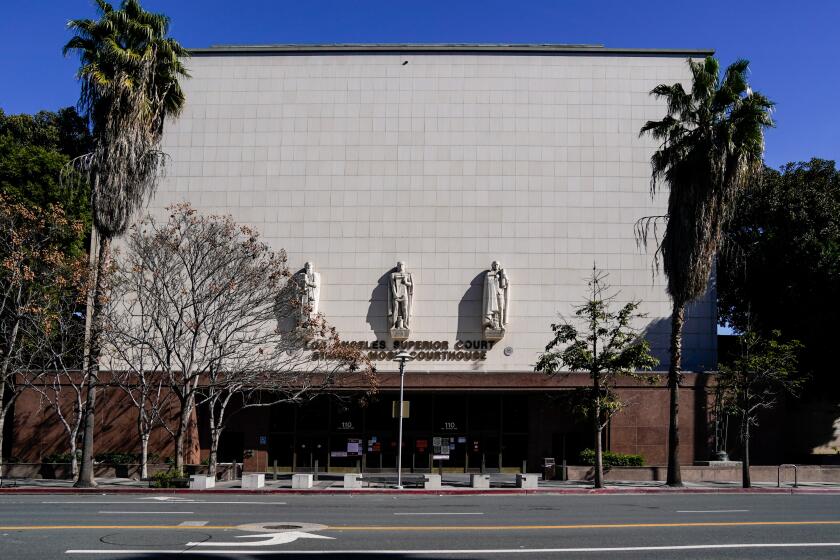Opinion: Keeping wild pumas alive in an urban environment is hard work. Is L.A. willing to do what it takes?

The wolves are back! California now has a well-established wild wolf population. “Hurray!” Californians cheer. Or at least the Californians in the big urban and suburban areas do. People in Siskiyou and Lassen counties, where wolves look to have found a home, might not be as thrilled, especially if they’re ranchers.
Environmentalists have advice for the homeowners: Don’t keep food and water where they’re easily accessible to the wolves — which should sound familiar to us in coyote territory. And for ranchers: Range riders, like the cowboys of old but with some modern twists, have been very successful at preventing herd depredation. In addition, the closer eye on the domesticated animals has led to better weight gain and health for them, as the range riders see when an animal is in need of veterinary care and when to move the herd to better grazing ground.
It all sounds so simple, right?
The thing is, it’s easy to love iconic species from a safe distance. Easy to determine the obvious solutions. Not so much when we perceive them as threatening our pets, our wallets and possibly even our children and ourselves.
The last couple of weeks have brought those quandaries to Los Angeles’ front door as two of our local mountain lions ran into conflicts with human civilization. The first was when a depredation license was issued to the owner of alpacas that had been killed by the puma known as P-45 in the Santa Monica Mountains. Then officials announced that a second mountain lion, P-39, the mother of three kittens, had been hit and killed on the 118 Freeway.
Area residents take a loving view of their local mountain lions, a rare symbol of wildness in an area where the wildest thing going on often seems to be the decorated milk foam on our coffee drinks. People were outraged that the alpaca owner had received a depredation license that would allow her to have the mountain lion killed; amid the hubbub, she said that it wasn’t her intent to impose a death sentence on the animal, but rather to have it either moved or placed in captivity.
I’m not convinced that would make the outcome any more natural, or even more humane. Captivity is what it is; perhaps to us it feels better than a death sentence, but it’s not exactly a happy outcome. And P-45 has a territory; this is it. Mountain lions tend to claim pretty big swaths of land, up to 370 square miles for males. He already was moved after previous attacks on llamas in the area, and he moved back.
The underlying issue here is how we view open land occupied by far-ranging predators. Is it (a) people’s land on which we tolerate wildlife when it’s well-behaved enough? Is it (b) their land on which we have encroached? Or is it (c) a sometimes uncomfortable sharing?
Killing or moving a healthy puma that has found easy prey in the form of fenced alpacas indicates an unfortunate adoption of the first approach. Which is a big problem if we hope to have truly wild animals in our midst and some semblance of balance in what we like to think of as nature. When we view it as the lion’s responsibility to stay away from our homes, our animals, the lion is seldom going to end up being a winner. At the same time, it’s impractical to allow a mountain lion to pick off all of a rancher’s animals on vast rangelands, or to present a real danger to human lives.
The Los Angeles Zoo showed the right attitude when one of its koalas was killed by a mountain lion. The mountain lion was engaged in natural behavior on its own territory, zoo officials said; we’ll move our vulnerable animals inside at night. That, or lion-proof fencing, would have been the better immediate response for the alpaca owner.
The state should change the rules so it’s not handing out depredation permits like candy every time a ranch loses an animal. In a mountain lion’s natural territory, when it is engaged in natural behavior, the key question should be: Is there a reasonable way to fix this without messing with nature? Yes, lion-proof fencing is an expense, but that has to be part of the cost of doing business in an area that has natural predators.
This is about more than romanticizing iconic species. As a practical matter, we can’t predict the effects of removing an apex predator from a particular environment. Scientists are still trying to figure out the early effects of wolf reintroduction at Yellowstone National Park. Some studies found evidence that wolves, by keeping elk on the move, were contributing to better growth of aspen and willow, which in turn was encouraging more beavers to build more dams, which have an assortment of helpful effects on steams and fish populations. Other scientists say the picture isn’t remotely that simple or clear.
Removing a mountain lion, or plunking it somewhere else, could have unforeseen environmental effects. Not to mention the effects on the mountain lion.
Of course, it’s easy to tell the alpaca owner to build better protection when it’s her neighborhood and her expense. But Southern Californians in general are killing mountain lions even by the fairly innocent activity of building roads. The death of P-39 this month on the 118 is a result of our collective need and desire to get places, to go about our business quickly and conveniently. What cost are Southern Californians willing to bear in order to protect wildlife? Would a toll or tiny transportation sales tax, dedicated to building more wildlife crossings along our high-speed roads, pass muster with Los Angeles area residents? Are we willing to keep our pets inside most of the day, and supervise them when they’re in the yard where coyotes might slip over the fence?
If not, we’d best keep our judgment of the alpaca owners or of nervous Northern California ranchers to ourselves.
Karin Klein is a freelance writer based in Southern California.
Follow the Opinion section on Twitter @latimesopinion or Facebook
More to Read
A cure for the common opinion
Get thought-provoking perspectives with our weekly newsletter.
You may occasionally receive promotional content from the Los Angeles Times.







